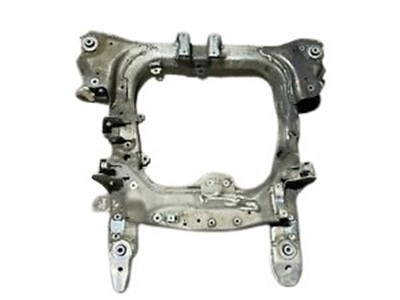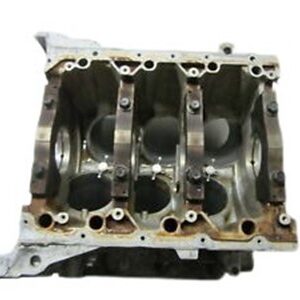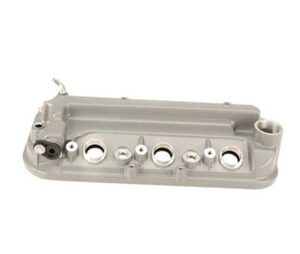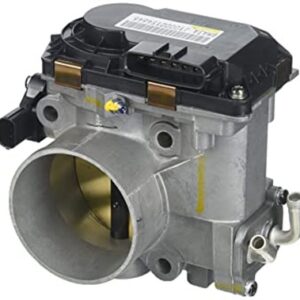Engine Cradle
An engine cradle, also known as a “subframe,” stands as a vital structural cornerstone within the realm of unibody vehicles, the prevalent architecture in contemporary passenger vehicles.
This crucial component serves as a steadfast support system for the engine, transmission, and front suspension, ensuring optimal performance and structural integrity.
Often referred to as a rolling engine stand, the engine cradle seamlessly accommodates the mounting and maneuvering of engines, embodying a pivotal role in automotive maintenance and maneuverability.
Crafted with precision and durability, our engine cradle exemplifies engineering excellence, fostering stability and longevity.
Whether you’re navigating the urban landscape or tackling rugged terrains, our versatile engine cradle assures resilience and steadfast support, regardless of your vehicle’s make or model.
Elevate your driving experience with our reliable and meticulously designed engine cradle – an epitome of automotive innovation.
$150.00
CompareEngine Cradle
The engine cradle, often referred to as a subframe or engine subframe, is a structural component of a vehicle’s chassis designed to support the engine, transmission, and sometimes other mechanical components like the suspension and steering systems. By securely housing these components, the engine cradle plays a vital role in ensuring vehicle stability, safety, and performance. It is a foundational element in many modern unibody vehicle designs, where it contributes to both structural integrity and crash safety.
Material and Construction
Engine cradles are engineered to be strong, durable, and lightweight, using materials that offer a balance of strength, rigidity, and weight savings:
- High-Strength Steel: Most engine cradles are constructed from high-strength steel due to their durability, impact resistance, and ability to handle the stresses exerted by the engine and suspension components. Steel provides excellent structural support and is commonly used in both standard and high-performance vehicles.
- Aluminum: Some vehicles, especially those focusing on weight reduction and fuel efficiency, use aluminum engine cradles. Aluminum is lighter than steel, which helps improve fuel economy and handling while still offering good strength and rigidity.
- Carbon Fiber and Composites: In high-performance and luxury vehicles, carbon fiber or composite materials may be used to construct engine cradles. These materials provide the highest strength-to-weight ratio, enhancing performance and handling characteristics.
- Cast Iron: Although less common in modern designs due to its weight, cast iron is sometimes used for engine cradles in heavy-duty applications where maximum strength and durability are required.
Design and Functionality
The engine cradle is designed with several key features to ensure its effectiveness in supporting the vehicle’s mechanical components and contributing to overall safety:
- Support for Engine and Transmission: The engine cradle provides a solid and stable mounting point for the engine and transmission, helping to secure these components in place. It absorbs and distributes the forces generated by the engine and vehicle movement, preventing excessive vibrations and stress on the vehicle’s structure.
- Integration with Suspension and Steering Systems: In many vehicles, the engine cradle also serves as a mounting point for suspension and steering components. This integration helps maintain proper alignment, handling, and ride comfort by ensuring these systems are securely attached to a stable framework.
- Crash Safety: Engine cradles are designed to absorb and dissipate energy in the event of a collision, protecting occupants by minimizing the impact forces transferred to the passenger compartment. Their design helps to manage crash energy and maintain the integrity of the vehicle’s structure during a frontal impact.
- Vibration and Noise Reduction: The cradle isolates engine vibrations from the rest of the vehicle, contributing to a smoother and quieter ride. It also helps to reduce noise, vibration, and harshness (NVH) levels within the cabin.
- Corrosion Resistance: Engine cradles are often coated or treated with anti-corrosion materials to protect against rust and corrosion, especially since they are exposed to the elements, road debris, and moisture.
Types of Engine Cradles
Different types of engine cradles are used depending on vehicle design, performance requirements, and intended use:
- Full-Frame Cradle: A full-frame cradle extends across the entire front of the vehicle, providing support for the engine, transmission, suspension, and sometimes even the front wheels. This type is common in trucks, SUVs, and some high-performance cars where maximum strength and stability are needed.
- Partial Subframe Cradle: A partial cradle, or subframe, supports only the engine and transmission, with separate mounting points for suspension and other components. This type is more common in compact and midsize vehicles, where weight savings and space efficiency are priorities.
- Tubular Engine Cradle: Some high-performance vehicles use tubular cradles, which are made from welded tubes instead of solid metal plates. These cradles offer high strength while reducing weight, making them ideal for racing and performance applications.
- Hydroformed Cradle: Hydroformed cradles use a manufacturing process that shapes the cradle from a single piece of metal using high-pressure fluids. This method allows for complex shapes, improved strength, and weight reduction, making it popular in modern automotive engineering.
Performance and Benefits
Engine cradles provide several critical benefits that contribute to vehicle performance, safety, and longevity:
- Enhanced Structural Integrity: The cradle adds rigidity to the vehicle’s chassis, improving handling and reducing body flex. This structural integrity is crucial for maintaining proper alignment and ensuring consistent performance.
- Improved Safety: By absorbing and distributing impact forces during a collision, the engine cradle helps protect the occupants and other critical components. Its design minimizes damage to the engine and transmission, which can be costly to repair or replace.
- Better Ride Comfort: The cradle’s ability to isolate engine vibrations and support suspension components contributes to a smoother and more comfortable ride. It reduces noise and harshness transmitted to the passenger cabin, enhancing overall driving comfort.
- Longevity of Engine and Transmission: By securely mounting the engine and transmission, the cradle prevents excessive movement and stress on these components. This stability reduces wear and tear, extending the life of the engine, transmission, and associated components.
- Ease of Maintenance: The design of the engine cradle often allows for easier access to the engine and transmission during maintenance or repair, simplifying the process for mechanics and reducing labor costs.
Maintenance and Care
Proper maintenance of the engine cradle is essential to ensure its continued effectiveness and the overall safety of the vehicle:
- Regular Inspections: Periodically inspect the engine cradle for signs of damage, rust, or corrosion. Pay attention to any cracks, dents, or deformities that could compromise its structural integrity.
- Check Mounting Bolts: Ensure that all mounting bolts and fasteners are secure and properly torqued. Loose or missing bolts can lead to excessive movement of the engine and transmission, causing vibration and potential damage.
- Corrosion Prevention: If you live in an area with harsh winters or exposure to salt, apply anti-corrosion treatments to the engine cradle. This treatment helps protect against rust and extends the lifespan of the cradle.
- Repair and Replacement: If the engine cradle is damaged in a collision or shows significant wear, it may need to be repaired or replaced. Always use OEM (Original Equipment Manufacturer) parts for replacement to ensure proper fit and performance.
Advanced Features and Technologies
Modern engine cradles may incorporate advanced features to enhance their functionality and performance:
- Modular Design: Some engine cradles are designed with modularity in mind, allowing them to be easily adapted to different vehicle models or configurations. This modularity can reduce manufacturing costs and improve production efficiency.
- Lightweight Construction: Advanced materials and manufacturing techniques, such as hydroforming or the use of carbon fiber composites, reduce the weight of the engine cradle without sacrificing strength. This reduction contributes to better fuel efficiency and handling.
- Integration with Active Safety Systems: In some vehicles, the engine cradle is designed to interact with active safety systems, such as advanced driver-assistance systems (ADAS). These systems rely on the structural stability provided by the cradle for accurate sensor alignment and performance.
- Acoustic Damping: Some engine cradles include features that enhance acoustic damping, reducing noise and vibration from the engine and road, thus improving overall cabin comfort.
Conclusion
The engine cradle is a vital component of a vehicle’s structure, playing a crucial role in supporting the engine, transmission, and other mechanical systems. Its design contributes to vehicle safety, performance, and comfort by providing stability, reducing vibrations, and managing impact forces in the event of a collision. Understanding the construction, functionality, and maintenance of the engine cradle can help vehicle owners ensure their vehicle’s reliability, safety, and longevity. Whether used in standard passenger cars, high-performance vehicles, or heavy-duty trucks, engine cradles are indispensable in modern automotive engineering.
Based on 0 reviews
Be the first to review “Engine Cradle” Cancel reply
Related products
-
Engine
Engine Block
0 out of 5(0)Engine Blocks, also known as Cylinder Blocks, stand as the robust foundation of automotive powerhouses.
Meticulously engineered, they house essential components such as cylinders, intake and exhaust passages, coolant channels, and crankcases.
Crafted with precision, our Engine parts ensure optimal performance and longevity, delivering the reliability your vehicle demands.
These parts seamlessly integrate with various systems, offering a harmonious synergy that propels your vehicle’s efficiency to new heights.
Trust in the durability and functionality of our Engine Blocks, meticulously designed to meet the highest standards of automotive excellence.
Elevate your driving experience with a powerhouse that embodies innovation and quality – because every journey deserves the reliability that comes with our exceptional Engine parts.
SKU: n/a -
Engine
Valve Cover
0 out of 5(0)The Valve Cover, also known as a rocker cover, stands as a crucial engine component, crafted from durable plastic or metal and securely bolted atop the cylinder head.
Its significance lies in the preservation of engine health and performance by effectively containing oil within the engine.
This integral part prevents oil leaks and ensures optimal functioning. Engineered for longevity and reliability, our valve covers are designed to meet the highest standards, catering to a wide range of vehicles, including LS models.
Each valve cover seamlessly integrates with the engine, forming a secure seal with the assistance of a high-quality valve cover gasket.
Enhance your engine’s longevity and performance with our premium valve covers a testament to precision engineering and durability.
Choose excellence for your vehicle, as our valve covers are crafted to exceed expectations, offering a perfect fit for various car models.
SKU: n/a -
Engine
Engine Oil Pan
0 out of 5(0)The engine oil pan is a vital component seamlessly integrated into your vehicle’s engine system.
Precision-engineered and crafted, it securely attaches to the engine’s underside using robust bolts, serving as the primary reservoir for oil.
As the heartbeat of your engine, this oil pan facilitates the efficient circulation of oil, ensuring optimal lubrication, cleanliness, and cooling of crucial moving parts.
During an oil change, the oil pan plays a pivotal role in the extraction and replenishment of engine oil, promoting longevity and peak performance.
Designed for compatibility with a variety of engine types, our oil pan exemplifies durability and reliability across all brands.
Engineered to exact standards, it enhances overall engine efficiency by reducing friction between components, mitigating heat generation, and promoting a cleaner, cooler engine environment.
Trust in the quality and versatility of our oil pan, a cornerstone of engine maintenance, whether you prefer conventional or synthetic oil.
Elevate your driving experience with a product designed to exceed expectations.
SKU: n/a -
Engine
Carburetor
0 out of 5(0)A Carburetor is an essential component that precisely regulates the fuel and air mixture entering the engine cylinder, ensuring optimal combustion in spark-ignition engines.
This device features a storage chamber for liquid fuel, a choke for initial startup, an idling jet for slow-running conditions, a main jet for regular operation, a venturi-shaped air-flow restriction for controlled airflow, and an accelerator pump for swift throttle response.
Within the carburetor, the air bleeder serves as a crucial element, facilitating the meticulous mixing of fuel and air to generate a finely atomized mist. This results in a smooth and efficient combustion process.
The carburetor’s design, incorporating these key components, enables it to cater to the specific needs of the engine, promoting optimal performance and fuel efficiency.
Whether it’s for daily commuting or high-performance applications, the carburetor plays a pivotal role in ensuring the seamless operation of spark-ignition engines.
Trust in the precision engineering of our carburetor and throttle body systems to deliver consistent and reliable performance across various automotive brands.
SKU: n/a -
Engine
Clutch Fork
0 out of 5(0)A clutch fork is an integral component within a vehicle’s clutch system, facilitating the seamless engagement and disengagement of the clutch.
Functioning as a critical link between the clutch pedal and the clutch throw-out bearing, the clutch fork translates the movement initiated by the clutch pedal into the necessary back-and-forth motions required for the clutch’s efficiency.
Crafted with precision, the fork plays a pivotal role in ensuring a smooth transition between gears, enhancing overall driving performance.
This high-quality clutch fork is designed to meet the stringent demands of modern automotive systems, offering reliability and durability across diverse driving conditions.
Its robust construction guarantees longevity, providing drivers with confidence in their vehicle’s clutch functionality.
Compatible with various vehicle makes and models, this clutch fork seamlessly integrates into different automotive systems, delivering consistent performance.
Trust in the superior design and engineering of this clutch fork, a key component contributing to the optimal functioning of your vehicle’s clutch system.
SKU: n/a









There are no reviews yet.